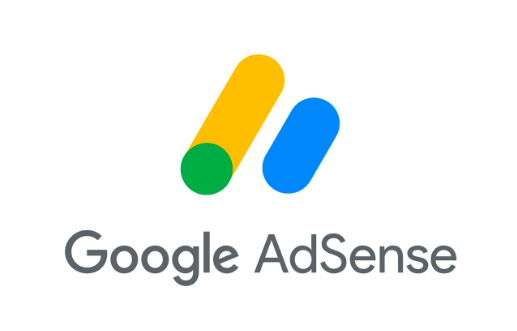
Google AdSense Expands Auto Ads with Related Search: Enhancing Relevance and User Experience.
In a move to improve ad relevance and user experience, Google AdSense has introduced a new feature called Related Search for Auto Ads. This feature seamlessly integrates contextual targeting based on search queries, keeping users engaged within a publisher’s site while potentially increasing ad revenue.
Here’s a breakdown of how it works, its potential benefits, and key considerations for publishers.
How Related Search Works:
- Content Analysis: AdSense scans the content of a publisher’s page to identify key topics and themes.
- Related Search Term Generation: Based on this analysis, AdSense generates a list of relevant search terms that users might be interested in exploring further.
- Seamless Integration: These terms appear as a list within a small box, usually placed strategically within the content or sidebar of the page.
- User Engagement: When a user clicks on a search term, they are taken to a Google-powered search results page that includes:
- Ads from Google AdSense for Search
- Relevant results from the publisher’s own site
Benefits for Publishers:
- Improved Ad Relevance: Serving ads that are contextually relevant to the page content can lead to higher click-through rates (CTRs) and potentially increased revenue.
- Enhanced User Experience: Offering a way for users to explore related topics without leaving the site can increase engagement and time spent on the page.
- Opportunity for Increased Site Search: By encouraging users to search within the site, publishers can boost their own search traffic and discoverability of content.
- No Additional Ad Load: Related Search units are considered navigational elements, not ads, so they don’t count towards the overall ad density on a page.
- Easy Setup: Publishers can enable Related Search within their AdSense Auto Ads settings with just a few clicks.
Considerations for Publishers:
- Language Availability: Currently, Related Search is only available for sites with pages in English or German.
- Potential Impact on Page Layout: Publishers should monitor the visual impact of Related Search units and adjust their layout if needed.
- Tracking and Optimization: It’s important to track the performance of Related Search and make adjustments as needed to optimize its effectiveness.
Overall, the Related Search feature in Auto Ads offers a promising way to enhance both user experience and ad relevance for publishers. By understanding how it works and considering its potential benefits and implications, publishers can make informed decisions about whether to adopt this feature and how to best leverage it to achieve their monetization goals.
Image:
Key takeaways:
- Related Search is a new feature within Google AdSense Auto Ads.
- It leverages contextual targeting based on search queries.
- It offers potential benefits for both user experience and ad revenue.
- Publishers can easily enable it within their Auto Ads settings.
- It’s important to track performance and make adjustments as needed.
Pros and Cons of Google AdSense Related Search for Auto Ads
Pros:
- Improved ad relevance: Ads displayed alongside related search terms are more likely to be relevant to the content and user interests, potentially leading to higher click-through rates (CTRs) and revenue.
- Enhanced user experience: Users can seamlessly explore related topics without leaving the page, keeping them engaged and increasing time spent on the site.
- Increased site search: By encouraging users to search within the site, publishers can boost their own search traffic and discoverability of content.
- No additional ad load: Related Search units don’t count towards the overall ad density on a page, maintaining a balanced user experience.
- Easy setup: Enabling Related Search is a simple process within the Auto Ads settings.
- Data insights: Publishers can track the performance of Related Search to gain valuable insights into user behavior and optimize their ad placement and content strategy.
Cons:
- Limited language availability: Currently only available for English and German sites, potentially excluding a large publisher base.
- Potential for layout disruption: The positioning of Related Search units might not fit seamlessly with all site designs, requiring adjustments for optimal visual integration.
- Uncertain revenue impact: While improved CTRs are likely, the overall impact on revenue might vary depending on the publisher’s niche and audience.
- Privacy concerns: Some users might be uncomfortable with the automatic generation of search terms based on page content.
- Lack of control over search terms: Publishers have limited control over the specific search terms displayed, and some might not be aligned with their desired user engagement strategy.
- Potential reliance on Google: Dependence on Google-powered search results within Related Search could limit user exploration of organic content on the publisher’s site.
Overall, Google AdSense Related Search for Auto Ads offers a promising approach to enhance user experience and ad relevance. However, publishers should carefully weigh the pros and cons, consider their specific audience and site design, and track performance to determine whether it aligns with their monetization goals.
Additional Points:
- Publishers with strong organic search results on their site might see less benefit from the Related Search feature, as users might prefer to use the internal search functionality.
- The visual design and placement of Related Search units can significantly impact user perception and engagement. Experimenting with different layouts and formats might be necessary to find the most optimal configuration.
- Transparency and user control over data are crucial considerations. Publishers should ensure clear communication about how Related Search works and offer options for users to opt out if desired.
By understanding both the benefits and potential drawbacks, publishers can make informed decisions about implementing Related Search for Auto Ads and maximize its effectiveness for their website and audience.
